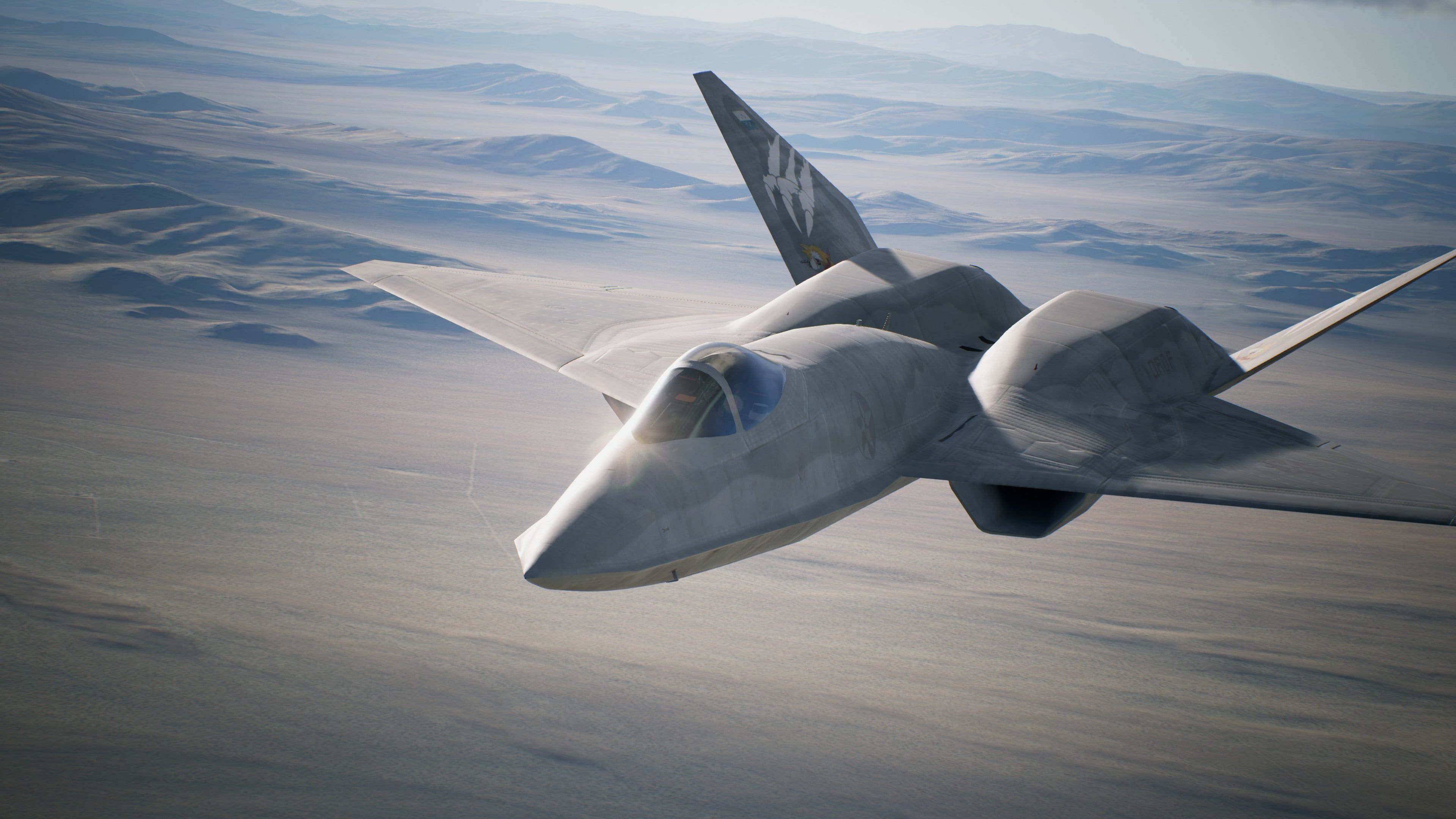Yf 23 Fighter - The Northrop/McDonnell Douglas YF-23 is a fifth-generation North American fighter designed to serve as a twin-engine stealth fighter for the United States Air Force (USAF). His design was one of the winners in the Advanced Tactical Fighter (ATF) competition, competing with the Lockheed YF-22 for the production contract. Two prototypes were built, "Black Widow II" (Black Widow II) and "Grey Ghost" (Grey Phantom).
In the 1980s, the USAF launched a tender for fighter replacement aircraft, prompted by the emergence of two advanced Soviet aircraft, the Sukhoi Su-27 and the Mikoyan MiG-29. Some builders submitted design proposals; The USAF selected proposals from Northrop and Lockheed. Northrop teamed up with McDonnell Douglas to develop the YF-23, while Lockheed, Boeing and General Dynamics developed the YF-22.
Yf 23 Fighter

Although the YF-23 was faster and stealthier, it was less agile than its Soviet counterpart. After four years of development and evaluation, the YF-22 was announced as the tender winner in 1991 and entered production as the Lockheed Martin F-22 RAR. The US Navy intended to use the ATF tender to replace its aging F-14 Tomcat, but the plan was scrapped.
Yf 23 Prototype Usaf Fighter 1/48 Hobby Boss
US surveillance satellites first detected the Su-27 and MiG-29 in 1978, causing US concern. Both Soviet aircraft exceeded American homologation in terms of maneuverability.
In 1981, the USAF asked several aerospace companies about the possibility of an aircraft development program (ATF) to replace the F-15 Eagle. After several discussions with these companies, the USAF established the goal of this program to develop an aircraft whose primary purpose was air-to-air combat.
The ATF uses emerging advanced technologies, including composite materials, mixtures of metals and elements, advanced flight control systems, more powerful propulsion devices and, most importantly, new stealth technologies. In October 1985, the USAF issued a request for proposals to several aircraft manufacturers. These order specifications were amended in May 1986 to include evaluation of two final models. At the same time, the US Navy announced that under the Navalized Advanced Tactical Fighter (NAFT) program, if the Air Force finalist was used in the competition, the second finalist would be used to replace the Navy's F-14 Tomcats. . The NAFT program intends to acquire 546 aircraft, while the USAF program intends to acquire 750 aircraft.
Above is a view of the YF-23 where you can see the geometry of the wings and the separation between the forward fuselage and engine.
Yf 23 Black Widow Ii Addon
In July 1986, Lockheed, Boeing, General Dynamics, McDonnell Douglas, Northrop, Grumman and Rockwell submitted proposals. Grumman and Rockwell soon withdrew from the tender.
After the proposal was submitted, Lockheed, Boeing and General Dynamics formed a team to develop the proposal, which was selected among the three. Northrop and McDonnell Douglas form the same team.
Finally, on October 31, 1986, a proposal from Lockheed and Northrop was selected. The two teams were given 50 months to build and test prototypes; Construction and testing were successful, and the Lockheed YF-22 and Northrop YF-23 were created.

Northrop gained valuable experience from the B-2 Spirit and the F/A-18 Hornet to reduce the chances of the YF-23 being detected by enemy radar or infrared.
U.s. Air Force Prototype Fighter Yf 23
The USAF initially required the aircraft to enter and stop below 610 meters, which required thrust reversal on the engines. In 1987, the USAF extended the landing distance limit to 914 meters, eliminating thrust reversal. This means that the aircraft can have engines in a smaller space, but the external design remains the same.
The first YF-23 (serial number 87-0800), Prototype Air Vehicle 1 (PAV-1), was launched on 22 June 1990;
A second YF-23 (serial number 87-0801, PAV-2) made its first flight on 26 October, piloted by Jim Sandberg.
The first YF-23 was painted charcoal black and nicknamed the "Spider".
Now Northrop Grumman Wants To Build Japan's New Fighter Jet
And "Black Widow II", referring to the Northrop P-61 Black Widow of World War II. For a while, this first prototype featured a red hourglass marking on the body, the same marking as the Black Widow, but with the Northrop marking removed.
Front view of YF-23 nr. 87-0801, which shows the curvature of the aircraft design and the V-shaped stabilizer.
The YF-23 is an aircraft with an unconventional appearance, with diamond-shaped wings, a slim profile to minimize drag at high speeds, and a V-shaped stabilizer for better pilot visibility. The landing gear is on the tricycle, and the weapons compartment is on the underside of the aircraft between the nose and the landing gear.

Two engines, in separate compartments, powered the aircraft; The air intake to the engine is serpentine to reduce the chance of detection by radar waves.
Northrop Yf 23 First Flight
While the first prototype, the PAV-1, was powered by two Pratt & Whitney YF119 engines, the PAV-2 was powered by two General Electric YF120 engines. The YF-22 engine has a directional nozzle on the engine, while the YF-23 has a fixed nozzle.
Like the B-2, the engine exhaust is vented through a system of chute with heat dissipating devices, giving the aircraft a better chance of evading infrared detection by enemy missiles.
The flight control system is controlled by a central computerized system. The stabilizer is mounted at an angle of 50 degrees. Test pilot Paul Metz reported that the YF-23 could achieve a higher angle of attack than any fighter to date.
With the flaps positioned in one direction and the ailerons in the opposite direction, the aircraft enters a state of aerodynamic collapse.
Yf 23 Black Widow 2 Fighter Jet Airplane On Stand By Testors
Despite the unorthodox and innovative design, the builders tried to keep costs as low as possible, achieving this by using components from other aircraft such as the F/A's main landing gear, the F-15's front landing gear. 18. and cockpit components of the F-15 Strike Eagle.
The first YF-23, with Pratt & Whitney engines, reached a supercruise speed of Mach 1.43 on September 18, 1990, while the second, with General Electric engines, reached Mach 1.6 on November 29, 1990. In comparison, the YF-22 achieved a super cruise speed of Mach 1.58.
The YF-23 was tested at a maximum speed of Mach 1.8 and was able to achieve a maximum angle of attack of 25 degrees.
Top speed is a secret, although some sources say top speed is higher than Mach 2 and supercruise speed is just over Mach 1.6.
Sky Flight Hobby Lx Yf 23 Twin 70mm Edf Rc Jet Pnp Rc Airplane Wholesale Cheap Discount Price,sky Flight Hobby Officual,lx Official.sky Flight Hobby Official,lx Official.lan Xiang Model Official
Bomb bays, weapons and missile launchers were configured for use, although they did not fire any projectiles; The Lockheed YF-22 successfully fired the AIM-9 Sidewinder and AIM-120 AMRAAM missiles. PAV-1 conducted a combat demonstration involving six flights totaling 10 hours on November 30, 1990; However, the exam will last till December.
The two teams submitted their evaluation results along with a proposal in December 1990.
And, on April 23, 1991, Donald Rice of the Department of the Air Force announced the YF-22 as the winner of the competition.
Therefore, the Air Force chose the YF119 engine to power the F-22. The designs achieved by Lockheed and Pratt & Whitney were high in technical aspects, low in risk, and still considered the most effective aircraft maintenance program.
Advanced Tactical Fighter
Following the results of this competition, the two YF-23s were transferred without engines to Edwards Air Force Base, California.
NASA intended to use one of these aircraft in a study of techniques for calibrating expected loads for measurements of flight results, but this was never undertaken.
In late 2004, Northrop proposed a bomber based on the YF-23 to meet the USAF's need for a new bomber, which included the FB-22 and B-1R.

The possibility of converting the YF-23 to a bomber was canceled in 2006 by the Quadrennial Defense Review decision, which favored a longer-range bomber. t is always present. Sometime in the 1990s, the YF-22 leading to the operational F-22 may have faced its match in the form of Northrop's YF-23. will have one of these highly capable airframes
The Black Widow's Revenge: The Legendary Yf 23 In A New Version May Appear Above The Far East
1 48 yf 23, yf 23 stealth fighter, yf 22 fighter, 1 72 yf 23, yf-23, yf 23 model kit, yf 23 aircraft, yf 23, yf 23 rc, hobbyboss yf 23, yf-23 black widow, yf-23 model
0 Comments